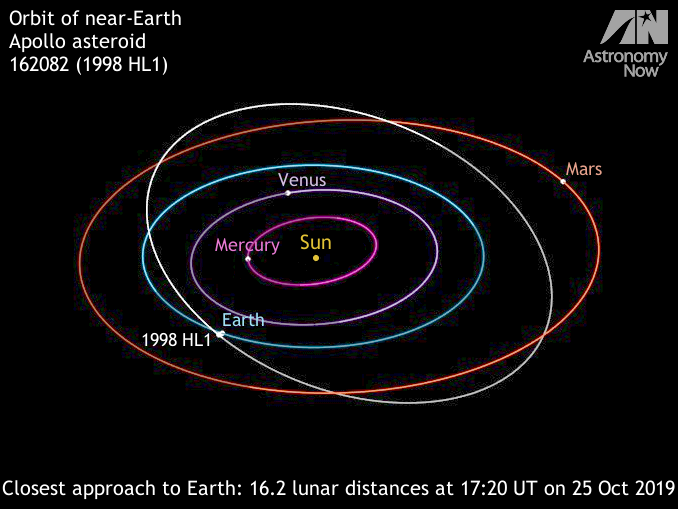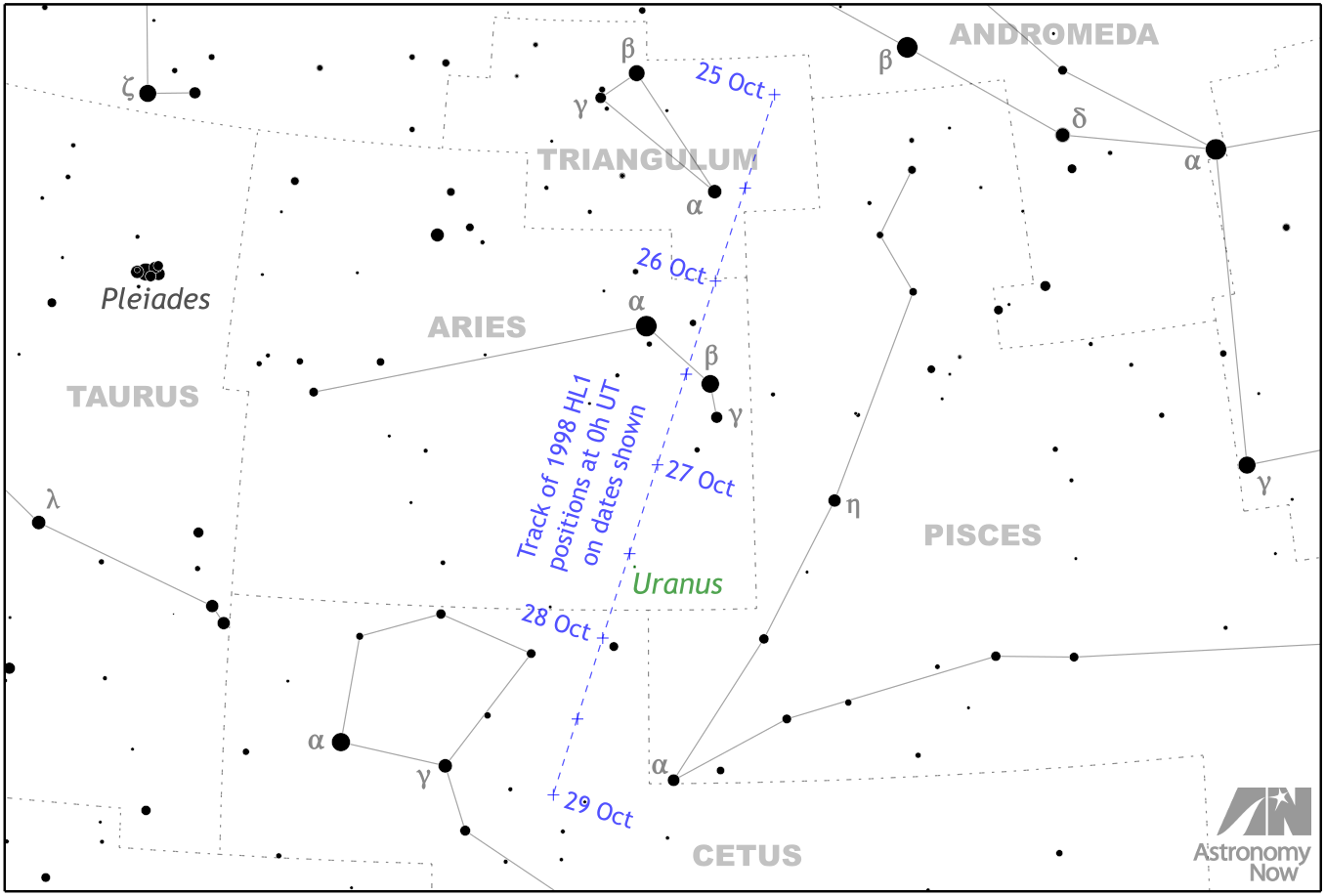Don’t miss the close flyby of bright space rock 1998 HL1 in late October – Astronomy Now Online

If any clear skies occur during the last week of October, don’t miss any opportunities to view a 700-metre-wide space rock with the catchy designation 162082 (1998 HL1) as it hurtles past our planet slightly more than sixteen lunar distances away at 17:20 UT (6:20pm BST) on 25 October 2019.
Predicted to reach a peak magnitude of +12.3 on 27 October, this near-Earth asteroid is a viable target for 6-inch (15-cm) aperture telescopes and larger for five nights as it zips through the constellations of Triangulum, Aries and into Cetus at rates of up to 9 degrees/day relative to the background stars.

Although classified as a Potentially Hazardous Asteroid (PHA), there is no chance that 1998 HL1 could collide with Earth for at least 120 years. The next time it passes closer to Earth than this apparition is on 26 October 2140 when it zips by our planet at a distance of 6.18 million kilometres, or 3.8 million miles.
Discovered by the Lincoln Near-Earth Asteroid Research (LINEAR) project at Socorro, New Mexico on 18 April 1998, 162082 (1998 HL1) is an Apollo-type asteroid that loops the Sun once every 508 days in an eccentric orbit inclined by 20 degrees to the ecliptic.





